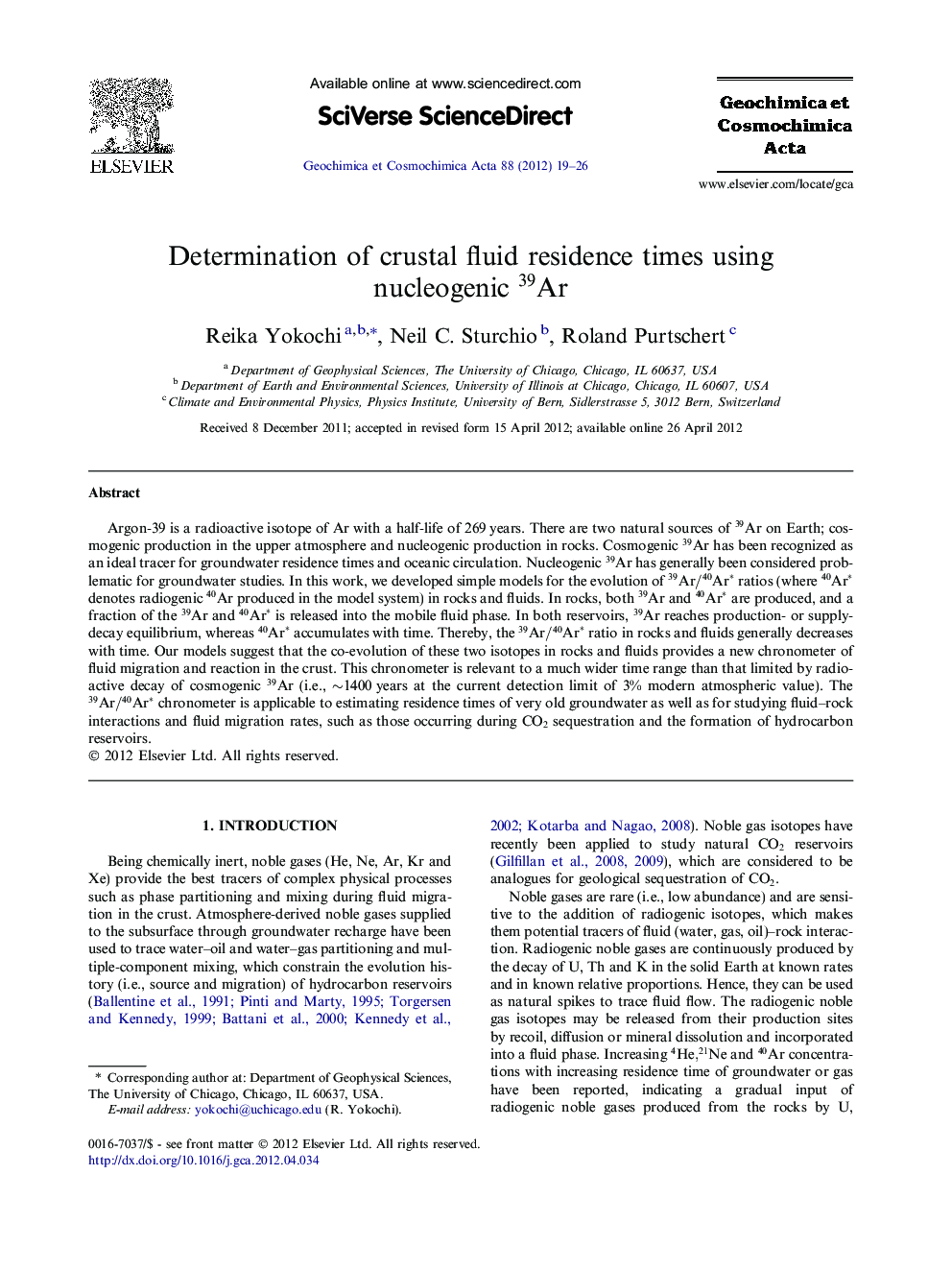| Article ID | Journal | Published Year | Pages | File Type |
|---|---|---|---|---|
| 6439212 | Geochimica et Cosmochimica Acta | 2012 | 8 Pages |
Abstract
Argon-39 is a radioactive isotope of Ar with a half-life of 269Â years. There are two natural sources of 39Ar on Earth; cosmogenic production in the upper atmosphere and nucleogenic production in rocks. Cosmogenic 39Ar has been recognized as an ideal tracer for groundwater residence times and oceanic circulation. Nucleogenic 39Ar has generally been considered problematic for groundwater studies. In this work, we developed simple models for the evolution of 39Ar/40Arâ ratios (where 40Arâ denotes radiogenic 40Ar produced in the model system) in rocks and fluids. In rocks, both 39Ar and 40Arâ are produced, and a fraction of the 39Ar and 40Arâ is released into the mobile fluid phase. In both reservoirs, 39Ar reaches production- or supply-decay equilibrium, whereas 40Arâ accumulates with time. Thereby, the 39Ar/40Arâ ratio in rocks and fluids generally decreases with time. Our models suggest that the co-evolution of these two isotopes in rocks and fluids provides a new chronometer of fluid migration and reaction in the crust. This chronometer is relevant to a much wider time range than that limited by radioactive decay of cosmogenic 39Ar (i.e., â¼1400years at the current detection limit of 3% modern atmospheric value). The 39Ar/40Arâ chronometer is applicable to estimating residence times of very old groundwater as well as for studying fluid-rock interactions and fluid migration rates, such as those occurring during CO2 sequestration and the formation of hydrocarbon reservoirs.
Related Topics
Physical Sciences and Engineering
Earth and Planetary Sciences
Geochemistry and Petrology
Authors
Reika Yokochi, Neil C. Sturchio, Roland Purtschert,
